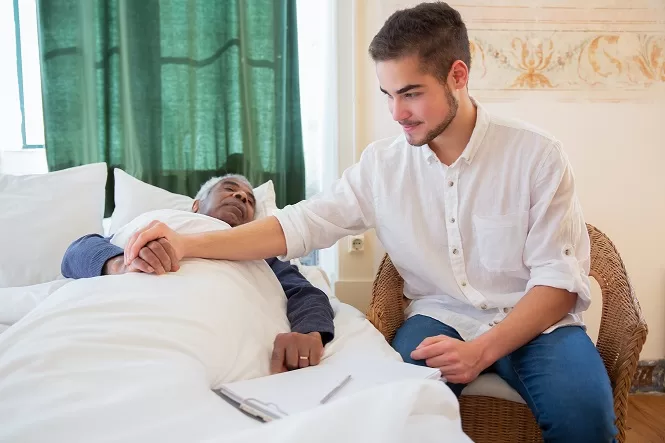Autonomic dysreflexia (AD) is a medical emergency that affects people with spinal cord injury (SCI) and can be life-threatening if left untreated. It is a condition where the autonomic nervous system, which regulates involuntary bodily functions, overreacts to a stimulus below the level of the injury.
Common triggers for AD include bladder or bowel distension, urinary tract infections, pressure sores, or any painful stimuli below the level of the injury.
Symptoms of AD include sudden high blood pressure, pounding headache, sweating, flushing of the skin above the level of injury, and anxiety. If left untreated, AD can lead to seizures, stroke, or even death.
Patient and Family education is the key: It is essential for people with SCI, their caregivers, and healthcare providers to recognize the signs and symptoms of AD and take prompt action to address the underlying cause. This may involve changing position, emptying the bladder or bowel, removing tight clothing or pressure on the skin, or seeking medical attention if necessary.
Prevention of AD includes regular monitoring of bladder and bowel function, maintaining good skin integrity, and avoiding any painful stimuli below the level of injury. In addition, people with SCI should receive education and training on AD management and have access to emergency medical services if needed.
By creating awareness about AD, we can help prevent this life-threatening condition and ensure that people with SCI receive the care and support they need to lead fulfilling and healthy lives. If you or someone you know has SCI, it is crucial to learn about AD and take steps to prevent and manage it.

Warning signals of AD in SCI persons Autonomic dysreflexia (AD) is a medical emergency that can occur in people with spinal cord injury (SCI). It is caused by an overreaction of the autonomic nervous system to a stimulus below the level of the injury.
Here are some warning signals of AD that SCI individuals and their caregivers should be aware of:
Sudden high blood pressure: AD can cause a rapid increase in blood pressure, which can lead to serious complications such as stroke or heart attack.
Pounding headache: An intense headache that comes on suddenly and feels like a pounding or throbbing sensation can be a sign of AD.
Flushing or redness above the level of injury: The skin above the level of injury may turn red or feel warm to the touch due to blood vessel dilation.
Sweating: Excessive sweating, especially above the level of injury, can be a sign of AD.
Nausea or vomiting: AD can cause gastrointestinal symptoms such as nausea, vomiting, or stomach pain.
Anxiety or feeling uneasy: AD can cause feelings of anxiety, restlessness, or unease.
It is important for SCI individuals and their caregivers to recognize these warning signals and take immediate action to address the underlying cause. This may involve changing position, emptying the bladder or bowel, removing tight clothing or pressure on the skin, or seeking medical attention if necessary.

Early recognition and treatment of AD can prevent serious complications and improve outcomes for individuals with SCI.
What to do when you suspect that you are going to have or are having AD?
If you suspect that you are having or about to have autonomic dysreflexia (AD) as an individual with spinal cord injury (SCI), it is important to take immediate action to address the underlying cause.
Some steps you can take:
Sit up or raise your head: This can help to lower your blood pressure and reduce the risk of complications.
Check for triggers: Identify any potential triggers that may be causing the AD, such as bladder or bowel distension, pressure sores, or tight clothing.
Remove the trigger: If possible, remove the trigger that is causing the AD. For example, emptying the bladder or bowel, or loosening tight clothing or pressure on the skin.
Monitor your blood pressure: Use a blood pressure monitor if available to monitor your blood pressure and seek medical attention if it is high.
Seek medical attention: If the symptoms persist or if you are unable to identify the trigger or manage the symptoms, seek immediate medical attention.
Prevent future episodes: Work with your healthcare provider to identify strategies to prevent future episodes of AD. This may include regular monitoring of bladder and bowel function, maintaining good skin integrity, and avoiding any painful stimuli below the level of injury.
It is important to have a plan in place for managing AD, including knowing the warning signals and having access to emergency medical services if needed. By taking prompt action to address the underlying cause, individuals with SCI can prevent serious complications and improve outcomes.







